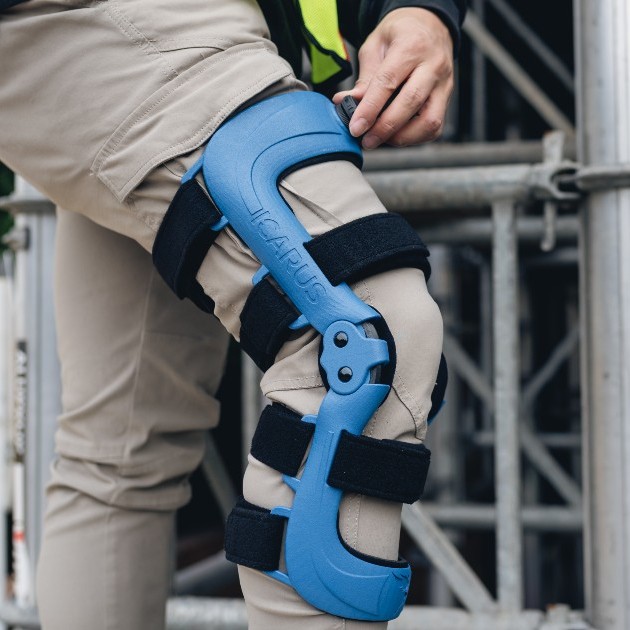Knee injuries are painful, tiresome, and costly. While it may seem like the end of the world when you suffer from one, they’re more common than you might think. Knee-related injuries rank third in serious work injuries.
A poorly treated knee injury can deteriorate into a chronic condition causing long-lasting health issues. So let the advice of experts and your health practitioner guide you during the first 72 hours. Also, remember to follow up with the right aftercare and support to promote healing and get you safely back on your feet again as quickly as possible.
What Causes Knee Injury?
The knee is the largest joint in your body and an incredibly important load-bearing area. Damage to your knee joint can mean trauma to bones, muscles, and tissue. Trauma to your knees can result from accidents, slips & falls, over-exertion in the sports field, repetition, and simply aging.
Common causes of knee injury:
- Exertion, wear and tear.
- Repetitive motions
- Falls, slips, and accidents from high elevation
- A force or object striking the knee
Any of these simple mishaps might cause fractures, dislocations, sprains, or tears – causing major disruption to your daily activities and routines. Now for the important topic, what should you do when facing a knee injury?
Immediate Aftercare (R.I.C.E)
During the first few hours post-injury, the Rest, Ice, Compression, and Elevation formula is a tried and tested mitigation practice that can be used. Your knee can be swollen and inflamed for several days after trauma. However, you can decrease inflammation and pain and lessen your own downtime by following the well-recognized RICE treatment plan. Remember to consult with your health care professional for their opinion and advice before committing to any treatment plan.
- Rest. Listen to your body. You may need to rest a day, or two – or longer. Gritting your teeth and limping through the pain can delay healing and you might end up immobilized for longer.
- Ice. Swelling and fluid build-up can be slowed down by adding ice to a painful, tender joint. Remember never to place ice or cold packs directly on to your skin as this can lead to frostbite. An ice pack inside a pillowcase is one simple solution employing materials usually found around the home.
- Compression – medical experts recommend knee braces for more persistent injuries. Initially, bandaging can help – but make sure you don’t wrap it too tightly. Ask your health care expert for assistance.
- Elevation. When possible, elevating your leg allows fluid to drain away from your injured knee, easing the swelling and throbbing.
Ensure that you discuss your level of pain with medical experts, who can assess the need for any further interventions to decrease inflammation and pain and allow you to recover as quickly as possible.
Don't Lose Sleep Over It
It’s important to consider your sleeping position in the aftermath of a knee injury because some positions make your pain worse. Discuss the use of support and optimal sleeping positions with your health care practitioner to ensure regenerative & deep sleep.
Studies show that a good night’s rest will help you heal faster. Vitamin “Z” is an important factor in how quickly you’ll heal, and a disturbed night’s rest can actually delay healing and increase pain levels. So don’t neglect this vital aspect of rehabilitation.
Proper Footwear
Now is not the time to value fashion over function. You wouldn’t go skiing in shorts, would you? Dress appropriately for your injury, and avoid turning it into a more serious problem by wearing comfortable supportive shoes.
Podiatrists suggest avoiding high heels, rigid shoes, or very flat shoes for the period that the injury persists. If you don’t have shoes that offer comfort for your injured knee, consult an expert and consider investing in footwear that won’t turn an injury into a persistent problem.
What's Next?
Unfortunately, even after doing everything right, you might still be suffering because knee injuries can be very persistent and severely impair our mobility. However, most of us can’t sit around waiting for our bodies to heal – we need to move!
Doctors agree that certain exercises can be very beneficial for recovery. Exercise can promote your body’s natural efforts to repair itself, reducing pain and increasing physical capabilities. You may be wondering, how can I exercise if it pains my throbbing knee? How can I build up strength in my knee without causing further damage? Let’s answer these questions for you.
Brace Yourself
Medical experts agree that knee braces help reduce pain, support healing, and allow faster mobility while avoiding exacerbating your injury.
Traditional knee braces have limitations, so our team at Icarus Medical has designed the Ascender, a customized lightweight knee brace designed to increase activity levels and decrease pain.
Selecting the Right Brace
Take the weight of the world off your knee with the Ascender knee brace from Icarus Medical.
The Ascender:
- Unloads up to 40 pounds from the knee joint
- Is lightweight, adjustable, and custom fit
- Is affordable for most with insurance
The Ascender knee brace is customized, lightweight and durable – and it is covered by most insurance plans, with payment options available too. The Ascender is fully adjustable, and breathable. Unlike many older designs, the Ascender has multi-compartmental unloading capability and is the first brace able to adequtely unload the patellofemoral compartment.
You can’t take a chance on your health, so don’t take a chance on your knees. With the Ascender knee brace, you can get back to doing what you love.

